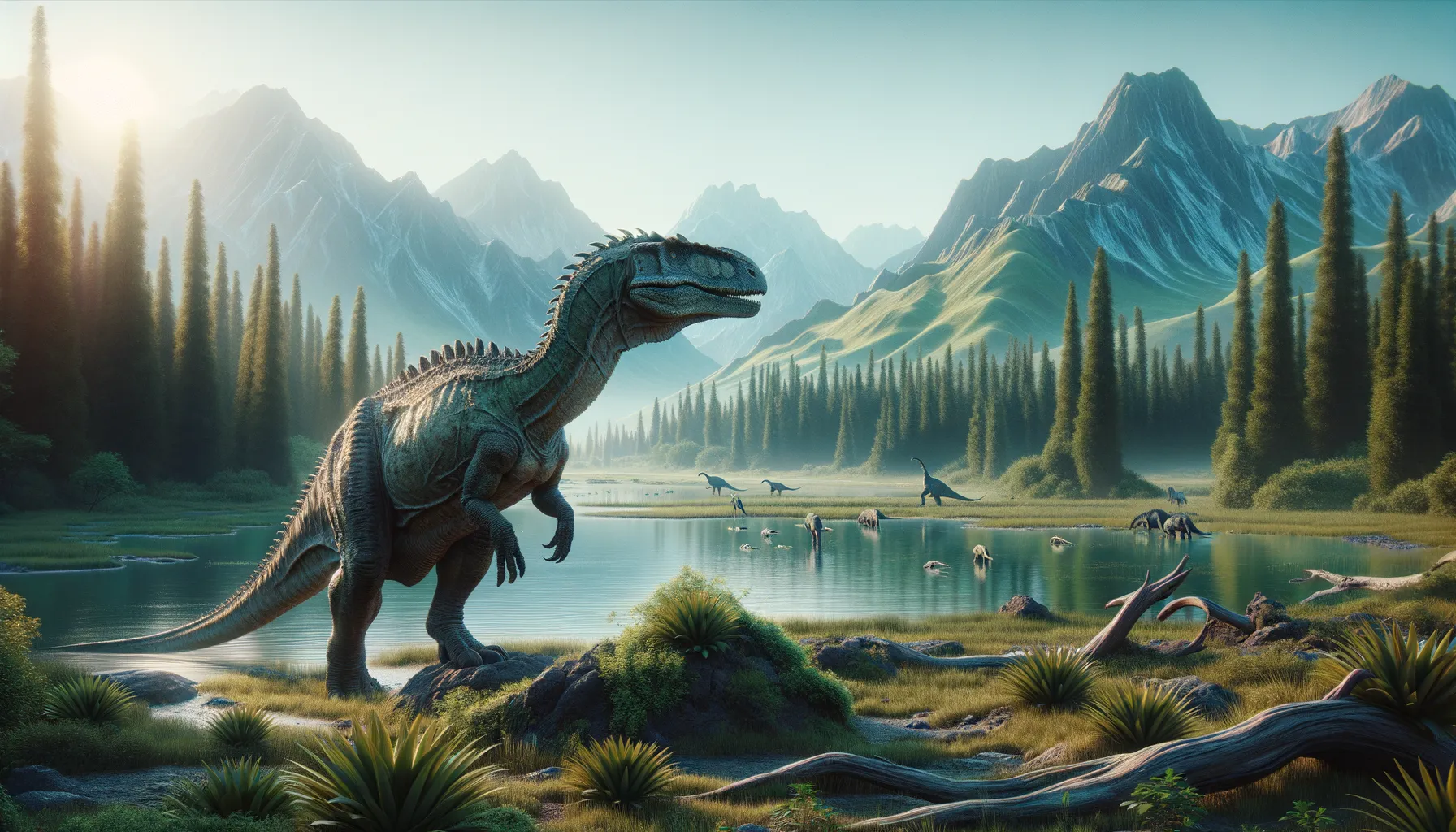
Choyrodon
Discover the ancient grazer's secrets!
Period
Cretaceous
Length
Measures around 3 meters in length.
Height
Stands about 1.5 meters tall.
Weight
Weighs approximately 200 kilograms.
Choyrodon was a herbivorous dinosaur that roamed the earth during the Late Cretaceous period. Discovered in Mongolia, it is recognized for its contribution to our understanding of the diverse ecosystem that existed during its time. Choyrodon belonged to the group called Iguanodonts, which were known for their herbivorous diet. Its body was well-suited for a life of grazing, feeding on the abundant plant life around it.
Diet
Choyrodon was strictly herbivorous, feeding on plants and vegetation that were widely available during the Late Cretaceous period. Its teeth were adapted to chew and process fibrous plant material effectively.
Hunting
Being a herbivore, Choyrodon did not hunt other creatures. Instead, it foraged for leaves, shrubs, and possibly low-lying branches to sustain itself.
Environmental challenges
Choyrodon faced challenges such as changing climate conditions which affected the availability of its plant-based diet. Predators in its habitat posed additional threats, requiring constant vigilance and group defense strategies. The competition for food among herbivorous species was also a significant factor in its survival.
Speed
Moderate movement speed, suitable for grazing.
Lifespan
Estimated to live around 10 to 20 years.
First discovery
First discovered in Mongolia in 2017.
Fun Facts
- Choyrodon was discovered in Mongolia and is a relatively recent addition to the dinosaur family.
- Its name, Choyrodon, is derived from the region where it was found, called 'Choyr', and 'don', which means tooth.
- This dinosaur lived around 90 million years ago during the Late Cretaceous period.
- Choyrodon was a herbivore, feeding on plants and vegetation that existed back then.
- It was a member of the hadrosauroid family, which is known for their duck-bill-shaped snouts.
- The discovery of Choyrodon has helped scientists understand the diversity of dinosaurs in Asia.
- Fossils of Choyrodon suggest that it may have been a social animal, living in herds.
Growth and Development
Young Choyrodons likely relied on protection from adults to survive the early stages of their life. They grew rapidly to minimize vulnerability to predators and to increase their chances of survival in a competitive environment. This growth would require a rich and accessible supply of vegetation.
Habitat
Choyrodon lived in regions that were lush with plant life, necessary to support its herbivorous lifestyle. These areas were likely composed of woodlands and plains, offering both food and protection. Water sources would have been essential for sustaining the large population of herbivores.
Interaction with other species
Choyrodon likely lived in herds, offering increased protection against predators. It coexisted with various other dinosaur species, including carnivores and fellow herbivores. Its interactions with other species would have been centered on maintaining survival, both as a community member and as potential prey.
Natural lifespan
Choyrodon naturally could live up to two decades in a supportive environment.
Reproduction
Choyrodon likely laid eggs, as with many dinosaurs, in nests that were protected by the herd. Breeding behaviors would have been crucial for the continuation of the species, with adults possibly taking roles in nurturing and protecting their young.
Social behaviour
Choyrodon might have exhibited herd behavior, which helped defend against predators. Social structures within its groups were probably based around family units to increase survival rates of offspring. Communication among herd members would have been essential for coordination.
Fossil locations
Fossils of Choyrodon have been primarily found in Mongolia. These discoveries add significant insight into the Cretaceous period ecosystems of Central Asia. Such locations are vital for understanding the geographical distribution and environmental context of the dinosaur's life.
